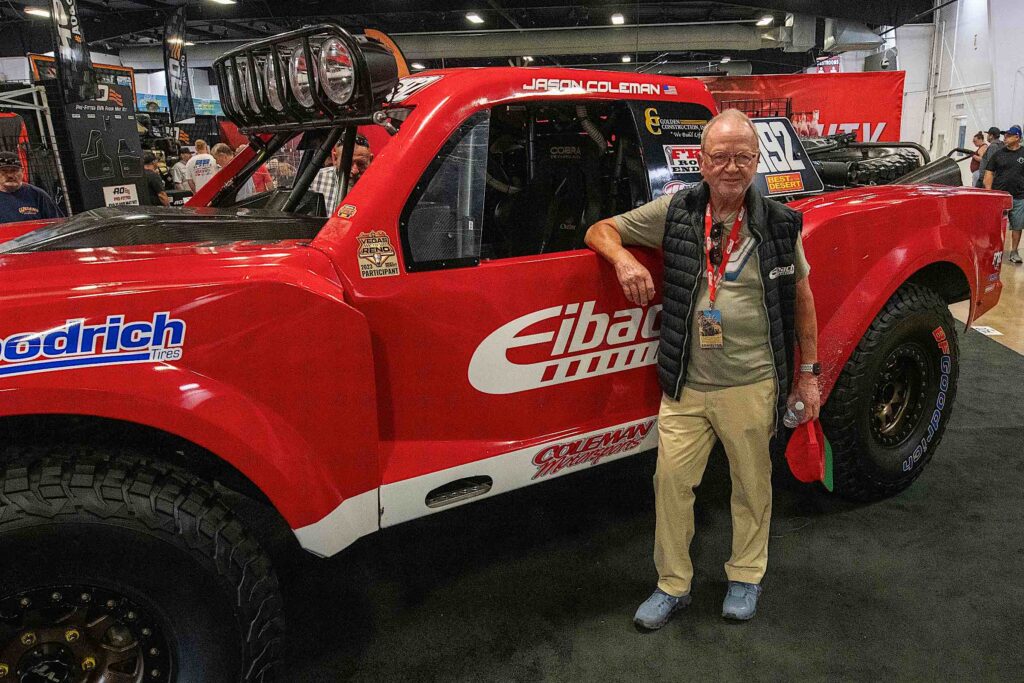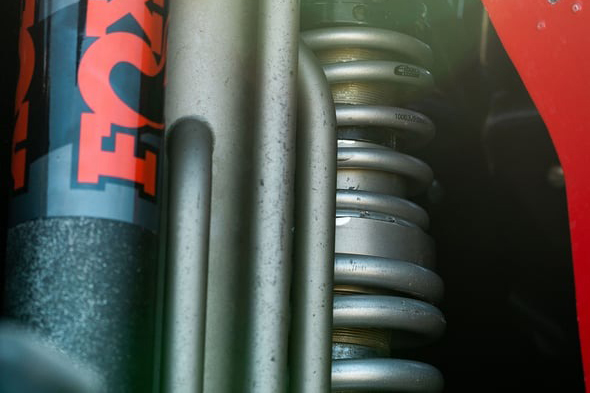

We can take things for granted in today’s day and age, but everything has to be figured out by someone first. At this year’s Sand Sports Super Show, we had the chance to sit down and talk with Wilfried Eibach. The name Eibach may sound familiar and it should, they are one of the automotive industry's leading spring manufacturers.
Founded in Germany in 1951, Heinrich Eibach laid the foundation for the Eibach Group. After Heinrich passed away in 1967, his son Wilfried took charge and grew the company to its current market-leading position.
Surprisingly, this was not Wilfried’s first time at the Sand Sports Super Show. The amount of knowledge and history that Wilfried has seen over the years is incredible and something we wanted to learn more about.
“This year wasn’t my first time to the Sand Sports Super Show, I have been here many times before,” Wilfried said. “We have seen the industry grow and change many times. From motorcycles to this now [pointed at Jason Coleman’s truck in Eibach’s booth], there have been many exciting changes along the way. I have always looked at the automotive market as something great for us, it doesn’t matter if it's a car or a horse pulling a buggy, they all use springs.”

“I have to say, the combustion engine will never disappear completely, but there will be 50 percent less one day. Therefore, the focus on suspension if you want to modify your car, lowering or lifting whatever, or change the characteristic of the vehicle, the driving dynamics, you will be focused more on the springs.”
“I always say tuning was invented in paradise. When Eve and Adam were there, there was no competition. Adam was happy with Eve, But then Magdalena came around the corner. So, what did she do? She was rushing to the next cosmetic shop to buy lipstick. She wanted to be different. And therefore, we see a lot of cars wanting to be different. That's how tuning started.”
We had to ask Wilfried how they got into the automotive industry and into the performance race springs we see on off-road vehicles.
“I'm 80 now, and I will be 65 years working in this company next April. And we were three people, my father had started it, but only on Industrial Spring. My father has never seen a suspension spring. He passed away in 1967. Since then, I've been running the show by myself with a lot of fantastic people around.”

“So, then there was AMG, the tuning spring we made. The owner of AMG, which at that time was still a privately owned company, came to me and said, ‘I want springs in smaller quantities than the big manufacturers make.’ So, we were perfect for that and we got into that. And then, of course, very soon, then motorsports. I actually invented the double spring setup, which was used in motorcycles. Motocross it was known, but nobody in automotive racing used it.”
“Then I saw that most of the race springs were made according to a special demand, and I said, No, we have to create a complete line of products. Now, we have 1,500 different race springs alone. And you can combine thousands of different setups. And we have them all in stock.”
“And we just decided from our German side because motorsport is much bigger than here, we decided we have imperial sizes, and we have metric sizes. Now, the metric sizes are all made here in our Corona plant because the most important part of such spring is the grinding process, and we have fantastic machines in Corona, all European machines.”
From what I learned from Wilfried, I couldn’t help but ask more about dual-rate setups. Almost every side-by-side out there has two springs on each shock.

“You have two contradictions in the suspension. You want to have it as soft as possible because you want to have traction. And on the other side, you want to reduce the body roll. One spring, the lighter spring, the softer spring goes on the block at some point. And then you have an immediate increase of the spring rate, and that keeps you from rolling over too much. That's the whole thing.”
“Formula One springs were made out of titanium material, progressive, but you had one characteristic. And then that didn't fit the weather. The temperature was climbing or raining; you couldn't change it. And so, I came up with the idea to have two springs.”
Wilfried and I continued to share stories of racing and off-roading. Wilfried shared stories of off-roading in Baja with Sal Fish and his adventures over the years. They were all something that I could have listened to for hours.
We can’t thank Wilfried enough for taking the time to talk to us. The knowledge, history, and personality were something I am glad I got the chance to do.

